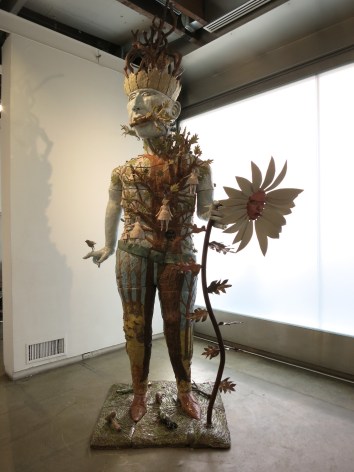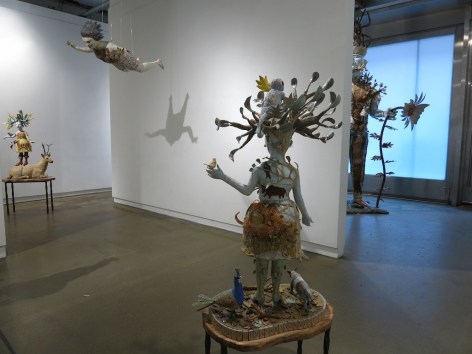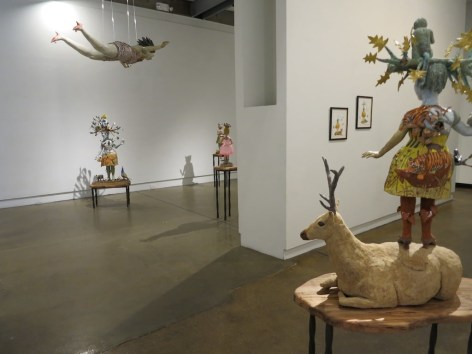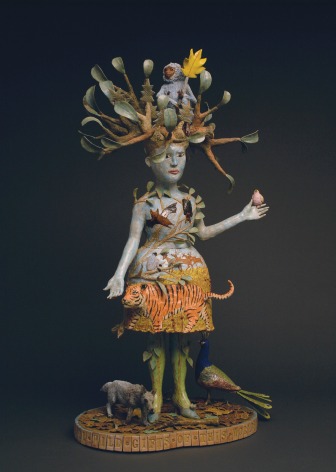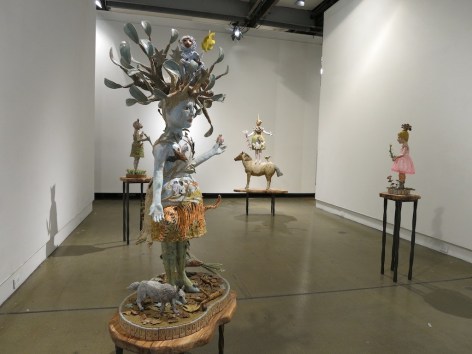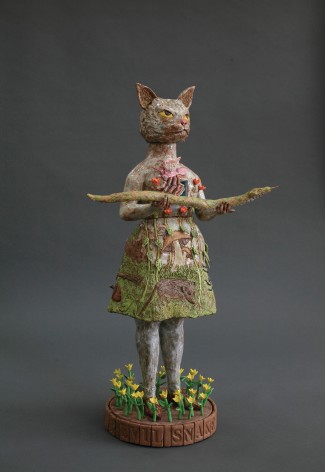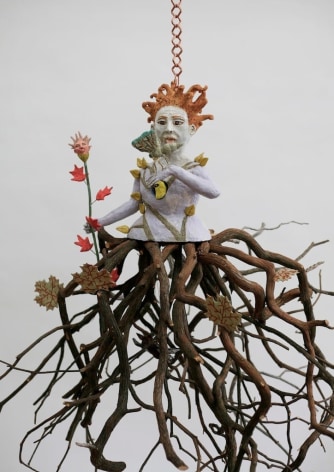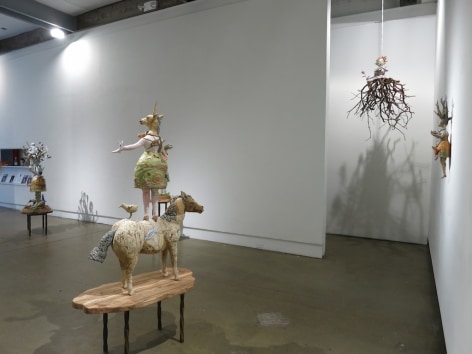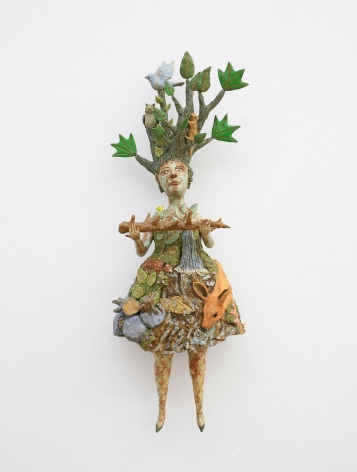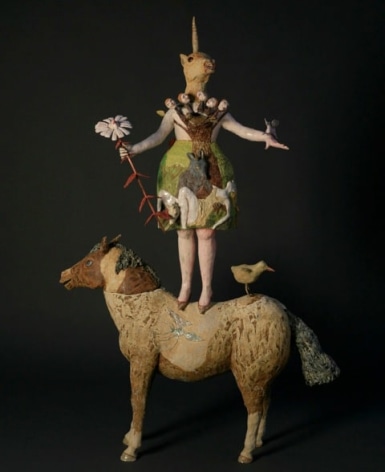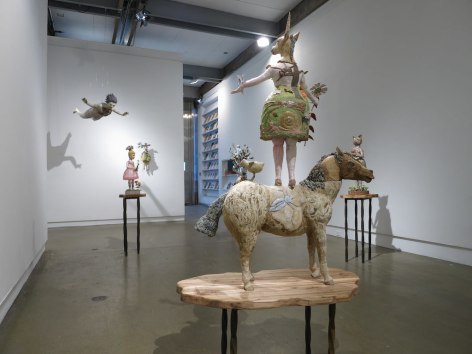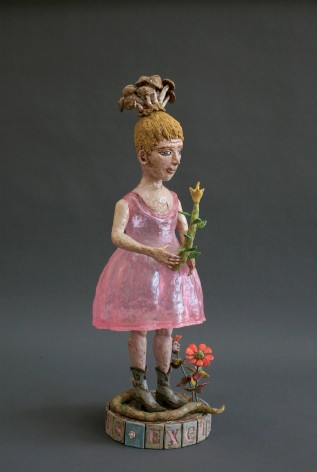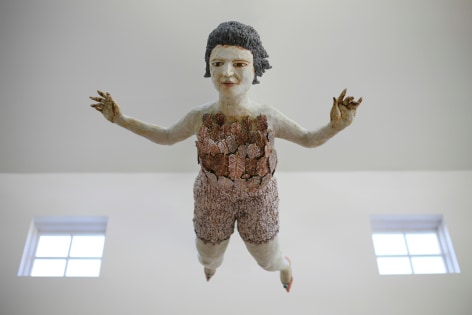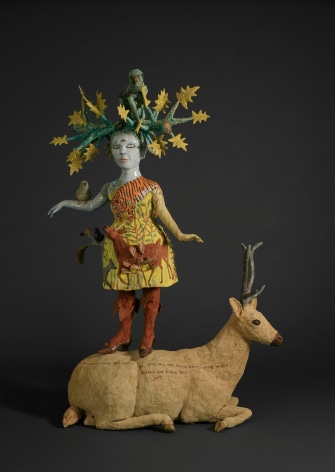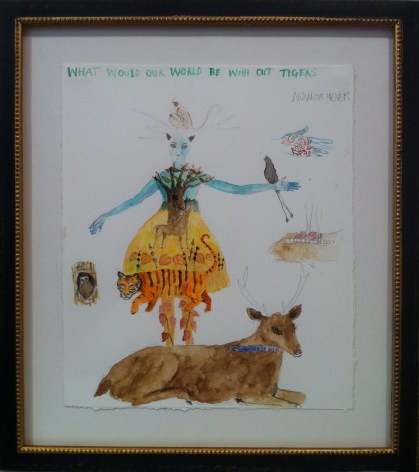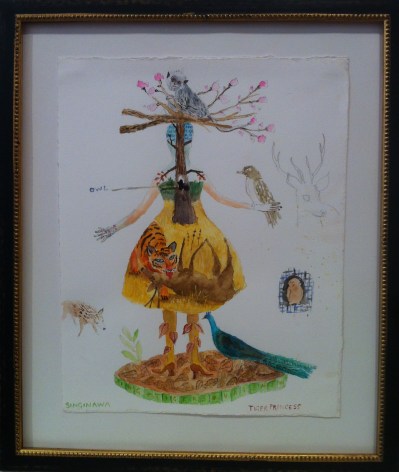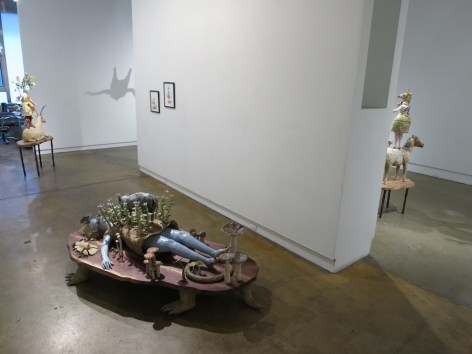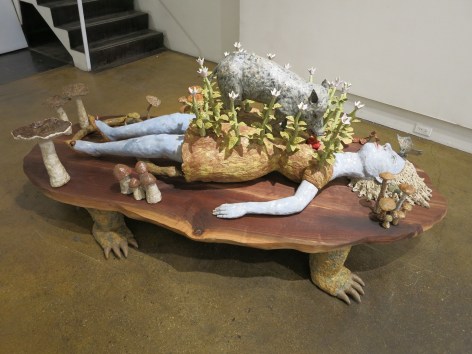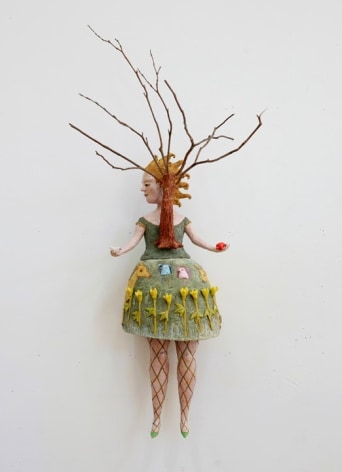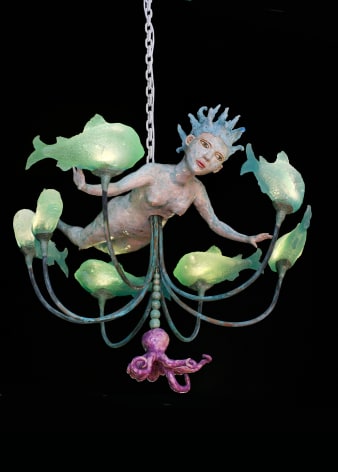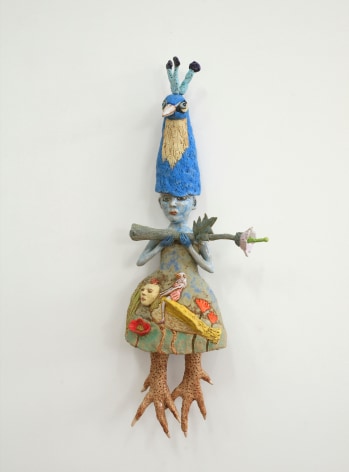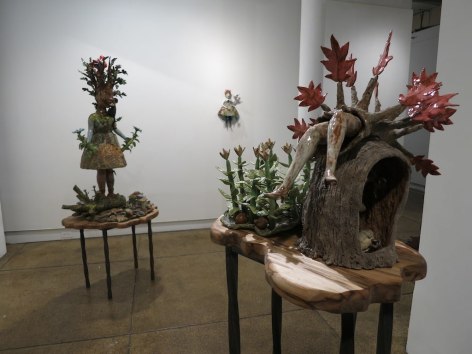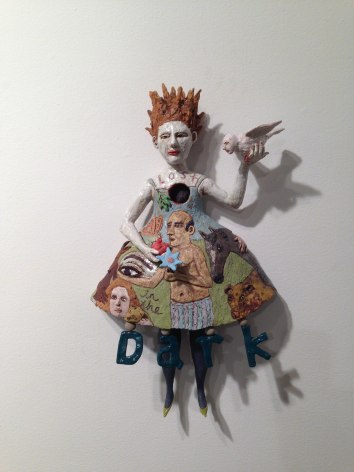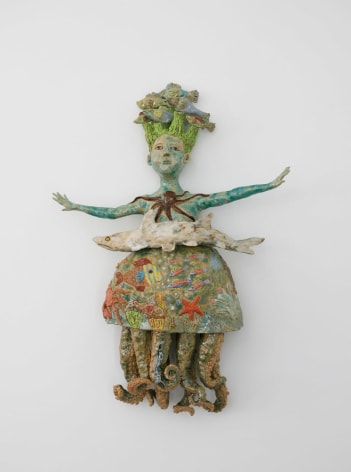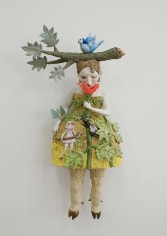Stux Gallery is pleased to present the second solo exhibition of works by New York artist Kathy Ruttenberg, “Nature of the Beast: New Ceramic Sculptures”. Following her inaugural show at Stux last year, Ruttenberg’s new works continue to explore the interplay between consciousness, imagination and gender relations. This exhibition coincides with Charta’s publication of her first major monograph.
Comparable to the works of Adriana Varejao, Arlene Shechet, Louise Bourgeois and Maurizio Cattelan, Ruttenberg’s lush narratives are at once enchanting, idyllic and utterly devastating. Open-ended, stark ruminations on gender politics are decontextualized and reinstalled amidst foliage and creaturely beings. Men are proprietors of a wonderland women seem to be intruding, and love is torturous, ceremonial and decidedly omnipresent. It is difficult to determine whether the characters are humans masquerading as animals (or vice versa), or incidents of paused metamorphoses. Their nonchalant, lifeless poses are almost weightless, as if their bodies are simply well-primed, submissive theatres for bizarre scenarios of affection and violence painted on their outfits. Although formal and conservatively tailored, Ruttenberg’s fashions expose rather than conceal. The intense passion that fires wet earth into terra cotta can be seen and genuinely felt.
Ruttenberg does not resolutely sever herself from the canon of artistic ceramics, but rather capitalizes upon its blissful associations and clay’s incredible versatility. The innocence of ceramic figurines disarms viewers and purges their preconceptions to intensify the effects of absurd, visceral visions of, for example, a woman giving birth to a pony whilst lying in her lover’s frozen arms. The stylized woodland immediately transports her scenes to the realm of fantasy and fairytales, where innocence can be, curiously, both lost and gained as nature absorbs her characters’ bodies in brutally whimsical ways. Suspended in a magical world without history and away from political discourse, Ruttenberg’s works urge us to consider gender rhetoric and feminism in the context of corporeal consciousness and pure imagination. Simultaneously, her earthbound materials and fastidious sensitivity to texture and color interrupt this reverie to render her mise-en-scénes conspicuously tangible and real.
-Lucy Li

